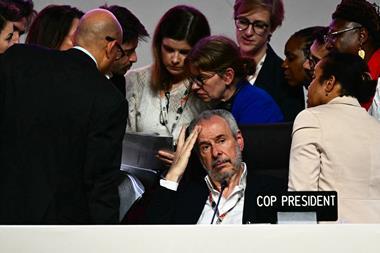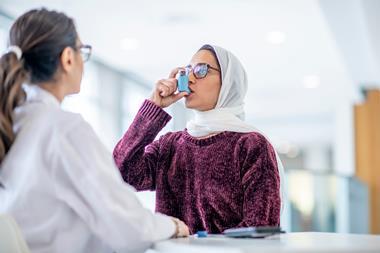Vaccines are being developed and tested but manufacturing capacity will be an issue
Donors pledged almost $2 billion (£1.1 billion) to combat avian flu and prepare for a possible human flu pandemic at a world avian flu conference held in Beijing, China, in January.
’To be truly prepared, we will need to mount a massive effort - from upgrading veterinary systems and launching vaccination drives, to encouraging change in the ways people coexist with animals,’ United Nations secretary-general Kofi Annan said at the meeting.
Preparing for a potential flu pandemic is complex. Among the many aspects, it involves surveillance to ensure all cases are identified quickly and to pinpoint the start of any pandemic. Logistics capabilities are needed to get anti-viral drugs to the first affected areas to try to reduce the risk that a fully transmissible virus will emerge, or to delay its spread.
This will buy time for vaccines to be developed and supplies to be built up, says the World Health Organization (WHO). However, it admits that this strategy is based on assumptions about the early behaviour of a pandemic virus.
Participants at the Beijing meeting also committed to increasing cooperation on global vaccine and anti-viral research and development.
Vaccines are currently being researched in several countries. About 10 countries worldwide have vaccine manufacturing capability and some companies have started clinical trials of avian flu vaccines, backed by government money.
For instance, the US government awarded contracts to Sanofi Pasteur and Chiron in 2004 to develop vaccines. The first Sanofi trials showed a significant immune response with two 90 ?g doses, which is a considerably higher dosage that a seasonal flu vaccine dose - generally 15-45 ?g. The company is now testing a vaccine containing an adjuvant to boost the response. This approach is promising because it could allow adequate protection at lower quantities of antigen and could consequently be manufactured in larger quantities. Results from this study are imminent.
Other research includes work being done by Australian biopharmaceutical firm CSL and the Murdoch Children’s Research Institute under a contract from the Australian government. Trials took place in October and November and results were due at the end of January. This vaccine is similar to the seasonal flu vaccine and the company expects it to be ready for registration in Australia by August 2007.
These vaccines are all for the H5N1 strain of avian flu. But a pandemic vaccine needs to be a close match to the pandemic virus strain. Consequently, large scale commercial vaccine production will have to wait until a pandemic virus has emerged and a vaccine specific to that strain has been developed. It is estimated that it will take three to six months before such a vaccine is widely available.
WHO estimates current production capacity to be around 300 million doses of trivalent seasonal flu vaccine per year which is a long way short of the demand that will occur during a pandemic. WHO is pushing for vaccine formulations that include an adjuvant because they could produce more vaccines with the same amount of antigen. The international community also needs to find ways to increase manufacturing capacity.
Karen Harries-Rees












No comments yet